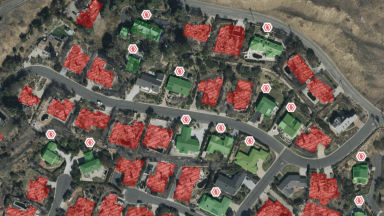The Affordable Home Upgrade That Could Save Your House from a Wildfire

 Image Credit: Home Upgrade
Image Credit: Home Upgrade
Wildfires are no longer just a seasonal scare in California—they’re an ever-present threat. From celebrity estates in Malibu to tight-knit communities in Sonoma, the devastation doesn’t discriminate. While A-listers may have the resources to rebuild, the real question is: How do everyday homeowners protect their properties in the first place?
The answer is surprisingly simple. According to fire safety experts, a small home upgrade—replacing your attic vents—could be the key to preventing catastrophic losses.
A Small Fix with Big Impact
Veteran firefighter Brent Berkompas has seen firsthand how quickly a wildfire can turn homes to ash. During the infamous Old Fire in San Bernardino, he watched 500 homes vanish in a single day—all because embers found a way inside. That moment led him and Kelly Berkompas to develop BrandGuard Vents, an ember-resistant vent solution designed to keep homes standing.
“Our vents offer Triple Protection,” explains Kelly. “They have overlapping baffles to reduce heat from embers, fine mesh screens to block ash and insects, and expanding strips that seal off the vent when exposed to high heat. Traditional mesh vents just slow embers down—ours are designed to stop fire entry altogether while still allowing airflow.”
At around $1,000 to install during a rebuild, fire-resistant vents are one of the most cost-effective ways to fortify a home against wildfire. “When we talk about home hardening, the cost is relatively minimal,” said Shaughn Ritchie, General Manager of BrandGuard Vents. “In contrast, losing a home to a wildfire can mean millions in damages, especially in California. Investing in fire-resistant materials and design isn’t just smart—it’s essential.”
Why Isn’t This the Standard?
As the threat of wildfires increases, the adoption of fire-resistant building codes is gradually expanding. Some insurance companies now offer premium discounts for fireproofing efforts, but the financial obligations still fall largely on homeowners.
“Ensuring homes are built to withstand wildfires should be a top priority for both homeowners and policymakers,” Ritchie emphasizes.
Beyond vents, experts recommend a layered approach to home hardening: maintaining defensible space, clearing dry vegetation, sealing exterior gaps, and using fire-resistant materials.
The Future of Fire Safety
As climate change fuels larger, more destructive wildfires, the risks are no longer confined to California. States like Colorado, Texas, Oregon, and Washington are facing similar threats, pushing fire safety innovations into the national spotlight.
For those looking to take action now, BrandGuardVents.com offers educational resources, installation guides, and free estimate tools. Contractors interested in partnering can also connect through the site.
“Wildfires are getting more intense,” Kelly warns. “But homeowners can take control. Small upgrades—like replacing your vents—can mean the difference between a house that’s lost and one that’s still standing. Don’t wait for the flames to get close. Act now.”
What's Your Reaction?
 Like
0
Like
0
 Dislike
0
Dislike
0
 Love
0
Love
0
 Funny
0
Funny
0
 Angry
0
Angry
0
 Sad
0
Sad
0
 Wow
0
Wow
0








:quality(85):upscale()/2025/04/15/902/n/1922729/3d7dfd3367fec3fd650936.22119452_.png)
:quality(85):upscale()/2025/04/15/805/n/1922729/6eb491a667fea352845729.84864442_.png)
:quality(85):upscale()/2025/04/15/728/n/1922195/5a7dda5367fe8954c66972.68529714_.png)






















